Choosing the Right Pallet Inverter for United States's Demands in OSHA Compliance and Labor Cost Reduction
Are you constantly worried about workplace safety on your production floor? I see it all the time. Good workers get sidelined by back injuries from lifting heavy loads. The manual process of transferring goods from one pallet to another is slow, inefficient, and a major risk. These inefficiencies and safety hazards don't just lead to downtime; they can result in steep OSHA fines, rising insurance costs, and a constant struggle to keep up with production demands. It’s a problem that silently eats away at your profit margins and your team's morale. What if you could eliminate that risk, speed up your entire process, and reassign your valuable team members to tasks that actually grow your business?
The right pallet inverter is a powerful tool that directly addresses these challenges. It automates the transfer of goods between pallets, which removes the need for dangerous manual handling. This single step helps you meet OSHA ergonomic standards, drastically reduces the risk of worker injury, and significantly cuts down on labor costs. By mechanizing this process, you increase throughput, minimize product damage, and free up your workforce for more productive, higher-value activities.
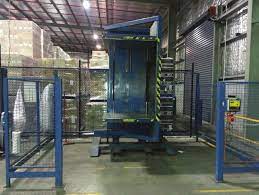
I have walked through hundreds of factories in my career, from my early days as an engineer to now running SHJLPACK. I’ve seen firsthand how a seemingly small operational bottleneck can have a huge impact on the entire business. Choosing a piece of equipment is not just about the machine itself. It is about finding a solution that solves a core problem. A pallet inverter is more than just steel and hydraulics; it’s a strategic investment in safety and efficiency. But not all inverters are created equal. Let's break down how to choose the right one for your specific needs, especially when facing the high standards of OSHA compliance and the constant pressure to reduce labor costs in the United States market.
How does a pallet inverter directly address OSHA compliance concerns?
Do you ever look at a manual task in your facility and immediately see the potential for injury? That was a constant concern for me when I managed a factory floor. A worker bending, twisting, and lifting heavy boxes repeatedly is a workers' compensation claim waiting to happen. The reality is that OSHA doesn't just look for obvious hazards like unguarded machinery. They are increasingly focused on ergonomics and musculoskeletal disorders (MSDs) caused by repetitive, strenuous tasks. Ignoring this can lead to violations, fines, and a reputation as an unsafe workplace. The solution isn't just more training; it's engineering the risk out of the job entirely.
A pallet inverter directly addresses OSHA compliance by completely eliminating the need for manual load transferring. The Occupational Safety and Health Administration (OSHA) emphasizes engineering controls as the most effective way to prevent workplace injuries. A pallet inverter is a perfect example of such a control. It mechanizes the entire process of lifting, rotating, and moving a full pallet load, protecting employees from the very actions—lifting, twisting, reaching—that cause the most common and costly back and shoulder injuries.
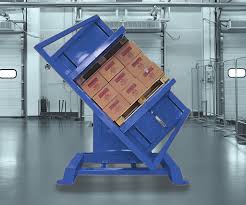
Dive Deeper into OSHA and Ergonomics
When we talk about OSHA, many people think of hard hats and safety glasses. But the real depth of compliance goes into how the work itself is performed. The regulations are designed to prevent injuries before they happen.
Understanding OSHA's Ergonomic Focus
OSHA's guidelines on ergonomics are very clear. They aim to prevent musculoskeletal disorders (MSDs), which include conditions like muscle strains, lower back injuries, and carpal tunnel syndrome. These are often caused by repetitive motions, awkward postures, and heavy lifting. Manually unstacking and restacking a pallet load hits all three of these risk factors. A worker has to bend down, lift a box, twist their body, and place it on a new pallet, hundreds of times per shift. A pallet inverter takes this entire hazardous process and makes it a simple, machine-operated task.
How a Pallet Inverter Acts as an Engineering Control
OSHA has a hierarchy of controls to mitigate workplace hazards. At the top of this hierarchy are "engineering controls," which physically change the work environment to eliminate the hazard. This is considered far more effective than "administrative controls" (like rotating jobs) or "Personal Protective Equipment" (like back braces), which rely on worker behavior. A pallet inverter is a primary engineering control. It redesigns the job itself.
| Manual Pallet Transfer (High Risk) | Pallet Inverter Process (Low Risk) |
|---|---|
| Repetitive bending and lifting | Operator uses controls from a safe stance |
| Twisting of the spine and torso | Machine performs 180-degree rotation |
| High risk of dropping products | Hydraulic clamps secure the load |
| Strain on back, shoulders, and arms | Minimal physical effort required |
| High potential for MSDs | Eliminates the root cause of MSDs |
I remember visiting a client's food processing plant. They were facing rising insurance premiums due to back injury claims in their shipping department. Two employees spent their entire day swapping products from in-house wooden pallets to plastic pallets required by their customer. We installed a simple, floor-level pallet inverter. Six months later, their injury claims in that department dropped to zero. It wasn't magic; it was just good engineering. The machine did the dangerous work, and the employees could focus on quality control and preparing shipments. This is what OSHA wants to see: a proactive, permanent solution to a known hazard.
What is the real ROI of a pallet inverter when considering labor cost reduction?
As a business owner, every investment has to answer one question: will it make us more money? You look at a quote for a new machine, and you see a significant capital expense. It's easy to hesitate. The pressure to control costs is intense, and spending a large sum on equipment that doesn't directly produce a product can feel like a luxury. You might think, "My guys can handle that manually. It's not a priority." But this thinking misses the hidden costs of manual labor and the true, rapid return on investment (ROI) that automation can provide.
The real ROI of a pallet inverter is often realized in under 18 months, driven by direct and indirect cost savings. The primary saving is the reduction in manual labor. Instead of two or three workers spending hours transferring loads, one operator can do the same job in minutes. This allows you to reallocate labor to more value-added tasks. Additionally, you save money by reducing product damage, eliminating worker injury costs, and increasing the overall speed of your operations.
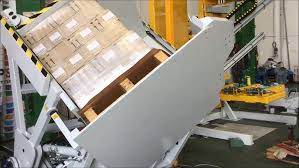
Dive Deeper into Calculating the Return
Calculating the ROI for a pallet inverter is more straightforward than you might think. It goes beyond just the purchase price. You have to look at the full picture of what you are currently spending on a manual process. When I started my own factory, I became obsessed with these calculations. Every dollar spent had to have a purpose and a measurable return.
The Tangible Savings: Labor and Damage
Let's start with the most obvious saving: labor.
Imagine you have two workers assigned to manually transfer 20 pallets per day.
- It takes them about 30 minutes per pallet. That’s 10 hours of labor per day.
- Let's assume a fully burdened labor rate (including wages, taxes, benefits) of $25/hour in the US.
- Daily labor cost: 10 hours * $25/hour = $250
- Annual labor cost (250 working days): $250/day * 250 days = $62,500
A pallet inverter can complete a cycle in about 2 minutes with one operator.
- Total time for 20 pallets: 20 pallets * 2 minutes = 40 minutes.
- The two workers are now free for over 9 hours of other tasks.
The labor savings alone can be massive. Now, add product damage. Manual handling leads to dropped boxes and broken goods. A conservative estimate of 1% damage on goods worth $2,000 per pallet adds up quickly. A pallet inverter with its secure clamping system virtually eliminates this.
The Hidden Savings: Safety and Speed
The indirect savings are just as important. These are costs that are harder to quantify but have a huge impact on your bottom line.
| Cost Category | Manual Process Impact | Pallet Inverter Impact |
|---|---|---|
| Workers' Comp | High risk of claims, leading to higher insurance rates | Drastically reduces MSD risk, lowering premiums over time |
| Employee Turnover | Unpopular, physically demanding job leads to high turnover | Creates a better, safer work environment, improving retention |
| Operational Speed | A bottleneck that slows down the entire shipping line | Process becomes fast and predictable, increasing throughput |
| Reputation | Risk of OSHA fines and being seen as an unsafe workplace | Demonstrates a commitment to modern safety standards |
When you add the direct labor savings to the reduction in damage and the lower risk of injury-related costs, the investment in a pallet inverter pays for itself very quickly. For many of my clients in high-labor-cost markets like the United States, the payback period is often between 12 and 24 months. After that, the machine is generating pure profit for your business every single day.
Which type of pallet inverter is best for heavy-duty industrial environments like a steel mill?
Your environment is not a cleanroom or a standard warehouse. A steel mill is a place of extreme temperatures, heavy loads, and abrasive dust. You can't just buy a standard, off-the-shelf pallet inverter and expect it to survive. The immense weight of steel coils, wire, or plates would destroy a light-duty machine in weeks. This leads to a dangerous failure, costly downtime, and the exact problem you were trying to solve. You need equipment that is as tough as the products you make.
For a heavy-duty industrial environment like a steel mill, the best choice is a robust, floor-level 180-degree pallet inverter. This machine should have a high weight capacity, typically exceeding 2000kg (4400 lbs), and be constructed from heavy-gauge, reinforced steel. Key features must include a powerful hydraulic system for both clamping and rotation, along with advanced safety mechanisms like light curtains or safety fencing to protect operators in a demanding environment.
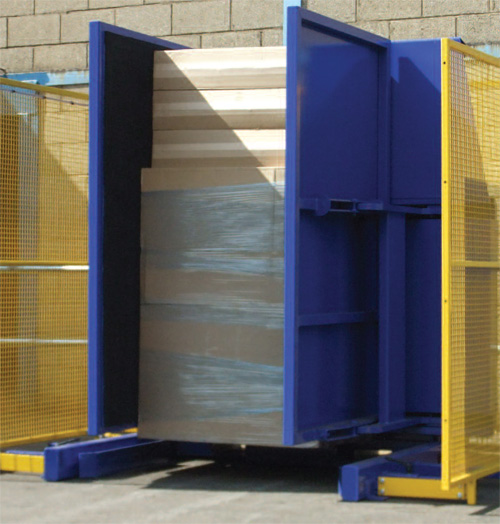
Dive Deeper into Heavy-Duty Machine Selection
When I work with clients in heavy industries like steel, aluminum, or paper, the conversation is different. We don't talk about just function; we talk about survival. The machine has to be over-engineered to handle the stress of the environment and the product. A failure is not an option when you have a two-ton load of steel suspended in the air.
Core Features for Industrial Strength
A pallet inverter for a steel mill is a different beast. Here are the non-negotiable features I always look for:
- Construction: The frame must be made from thick, welded structural steel, not bolted-together thin plate. All pivot points and moving parts must be oversized with high-quality bearings.
- Hydraulics: The hydraulic power unit needs to be powerful enough to provide smooth, controlled rotation and strong, adjustable clamping pressure. You need enough force to hold a dense load of steel securely, but not so much that you damage a more fragile product.
- Capacity: Never choose a machine that is at its weight limit. If your heaviest pallet is 1800 kg, you should be looking for a machine rated for at least 2500 kg. This safety margin ensures longevity and reliable operation.
- Controls: The controls should be simple, robust, and protected from dust and damage. Push-button controls are often more reliable in these environments than delicate touch screens.
Comparing Inverter Types for Steel Applications
Not all inverters are suited for this work. The choice depends on your exact process.
| Machine Type | Best Use Case in a Steel Mill | Key Advantage |
|---|---|---|
| 180° Inverter | Swapping steel coils or stacked plates from one pallet to another. | Complete inversion allows for easy removal of the old pallet. |
| 90° Tilter/Upender | Tipping a steel coil from a vertical to a horizontal position. | Excellent for changing the orientation of a single, large item. |
| Pallet Changer | Pushing a load from one pallet to another without inversion. | Good for loads that are sensitive to being turned upside down. |
For most general pallet-swapping needs in a steel plant, the 180° inverter offers the most flexibility and security. It fully contains the load during the transfer, which is critical for safety with heavy, potentially unstable products.
I once consulted for a steel wire manufacturer. They were shipping large spools of wire on custom wooden pallets. Their customers required them to be on standard plastic pallets. The manual process was slow and dangerous. We designed a heavy-duty 180° inverter with a customized V-shaped loading platform to securely hold the spools during rotation. This bespoke solution not only solved their pallet problem but also improved their operational flow and operator safety. This is why understanding the specific application is so important. A generic machine would have failed. You need a solution designed for your world.
How can a pallet inverter integrate into a digitally transformed factory?
You are already investing in smart platforms and MES systems to get a better handle on your operations. You want total visibility, from the raw material entering your plant to the finished product leaving the shipping dock. But what about the steps in between? Often, end-of-line packaging and handling equipment are treated as standalone "dumb" machines. This creates a data black hole. Your smart factory system knows a product is ready for shipping, but it has no idea if it's been transferred to the right pallet or if there's a bottleneck in the process. This gap prevents you from achieving true, end-to-end optimization.
A modern pallet inverter integrates into a digitally transformed factory by using its Programmable Logic Controller (PLC) to communicate with your higher-level systems, like a Manufacturing Execution System (MES) or Warehouse Management System (WMS). This connection allows the inverter to send real-time data on its status, cycle counts, and any potential faults. It can also receive commands, enabling it to become a fully automated, integrated part of your production line, rather than a standalone island of automation.
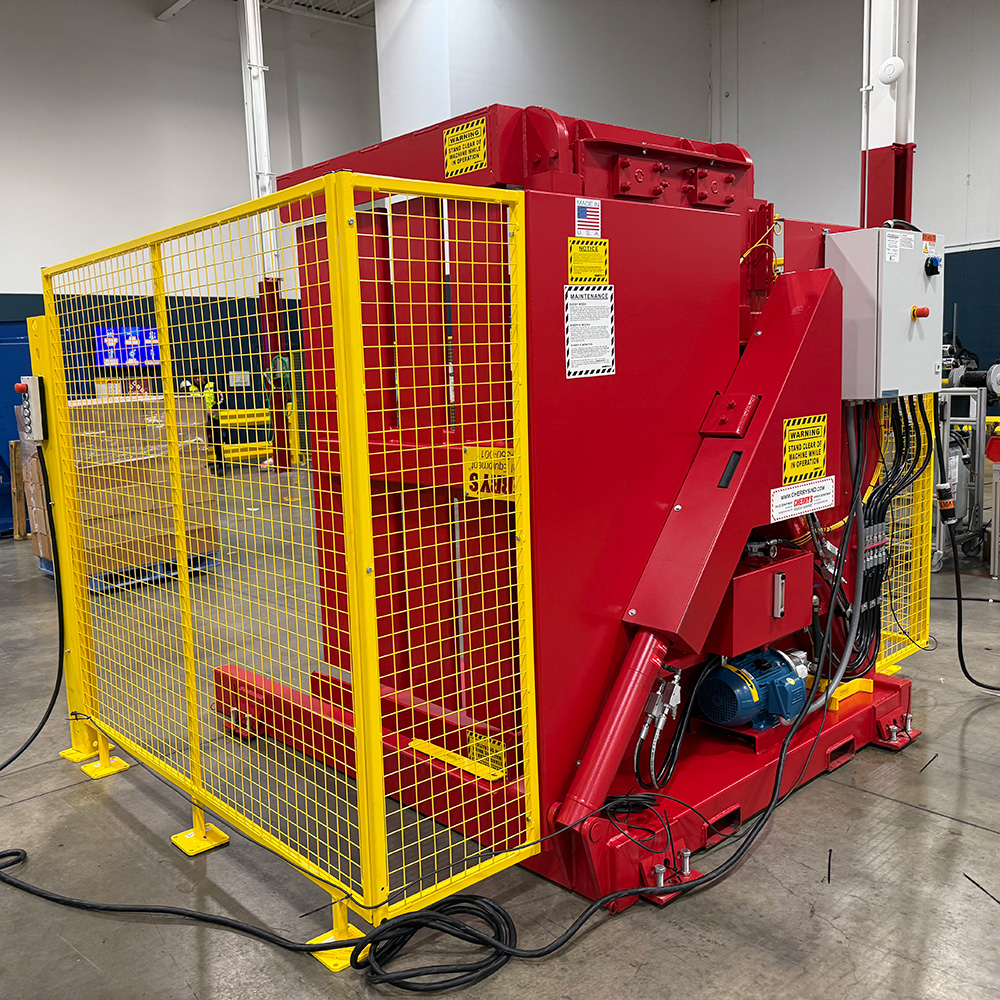
Dive Deeper into Smart Integration
Making a machine "smart" is not as complicated as it sounds. It's about enabling communication. In my journey from engineer to factory owner, I saw the power of data. The more you know about your process, the better you can control and improve it. A pallet inverter is no different.
From Standalone to Connected
A basic pallet inverter has a simple control panel. An operator pushes a button, and the machine runs its cycle. A smart, integrated inverter is part of a larger conversation.
- Upstream: An automated guided vehicle (AGV) or conveyor system can bring a pallet to the inverter. A sensor tells the inverter a load is present.
- The Inverter: It communicates with the MES to confirm the product ID. It then automatically runs the correct cycle.
- Downstream: Once the cycle is complete, the inverter sends a "cycle complete" signal to the MES and signals for another AGV or conveyor to take the finished pallet away.
This level of automation removes human decision-making and waiting time, creating a seamless flow.
The Data Points and Their Value
Connecting a machine to your network is only useful if you get valuable data from it. A pallet inverter can provide key information that helps you meet your operational goals, like improving uptime and enabling predictive maintenance.
| Data Point Collected | How It Helps Your Goals |
|---|---|
| Cycle Count | Tracks usage for scheduling predictive maintenance before a failure occurs (Goal: 95% Uptime). |
| Operational Status | Informs your MES if the machine is running, idle, or faulted (Goal: Production Visualization). |
| Fault Codes | Sends specific error codes to maintenance, allowing for faster diagnosis and repair. |
| Cycle Time | Measures the exact time for each cycle, helping to identify inefficiencies or slowdowns. |
| Motor Amperage | Monitors motor health. A gradual increase in amperage can indicate a future mechanical problem. |
I worked with a large distribution center that was implementing a new WMS. They needed their entire packaging line to be connected. We equipped their new pallet inverter with an Ethernet/IP communication module. This allowed their central system to not only track every pallet that went through the inverter but also to monitor the machine's health. They set an alert for when the machine reached 10,000 cycles, which automatically created a work order for the maintenance team to perform a scheduled inspection. This is a simple example of how a "simple" machine becomes a proactive part of a smart factory ecosystem. It's no longer just about moving pallets; it's about providing the data you need to run your entire operation better.
What should you look for in a pallet inverter supplier to ensure a true partnership?
You've decided you need a pallet inverter. You do a search online and find dozens of suppliers. They all have websites with pictures of shiny machines. Many will compete on price, offering what seems like an incredible deal. But as an experienced business owner, you know that the lowest price is rarely the best value. A machine is a long-term asset, and the company you buy it from can be either a great partner or a major headache. A cheap machine with no support can quickly become the most expensive piece of equipment you own when it fails and you can't get help.
To ensure a true partnership, you must look beyond the price tag and evaluate the pallet inverter supplier on their engineering expertise, their ability to understand and customize for your specific application, and their commitment to long-term support. A true partner acts as a consultant during the sales process, provides thorough installation and training, and offers reliable, responsive after-sales service, including readily available spare parts. They are invested in your success, not just in making a single sale.
Dive Deeper into Choosing a Partner, Not a Vendor
Throughout my career, I've been on both sides of the table. I've bought equipment for my own factory, and now I provide it to others. This experience has taught me that the relationship is just as important as the hardware. A vendor sells you a box. A partner provides a total solution.
The Three Pillars of a Great Supplier Partnership
-
Pre-Sale Consultation and Engineering: A vendor will send you a catalog. A partner will ask questions. They will want to know about your product, your pallet types, your workflow, your space constraints, and your goals. They will have engineers on staff who can talk to your engineers. At SHJLPACK, we see this as the most critical stage. This is where we might suggest a modification, like a different clamping mechanism for an unusual load or integrating specific sensors for your data system. This collaborative approach ensures you get the right machine, not just an available one.
-
Installation and Training: A vendor might ship the machine to your door with an instruction manual. A partner understands that proper installation and training are key to success. They should offer on-site support to ensure the machine is set up correctly and safely. More importantly, they will train your operators and maintenance staff. A well-trained team can handle minor issues themselves, which increases uptime and their sense of ownership over the equipment.
-
After-Sales Support: This is where the difference between a vendor and a partner becomes most clear. What happens when you have a question a year after purchase? Or when you need a spare part?
| Aspect | The Vendor Approach | The Partner Approach |
|---|---|---|
| Technical Support | A generic customer service line. | Direct access to engineers who know your machine. |
| Spare Parts | Long lead times, trouble identifying parts. | Keeps critical parts in stock, provides clear documentation. |
| Relationship | Transactional. The relationship ends after payment. | Ongoing. They check in to see how the machine is performing. |
| Goal | To sell a machine. | To solve your problem and help your business succeed. |
When I founded SHJLPACK, I built it on the principle of partnership. I remember the frustration of dealing with unresponsive suppliers when I was running my own plant. That's why our slogan is "TOTAL SOLUTION FOR WRAPPING MACHINE." It's not just about the machine. It's about understanding the need, designing the right solution, and being there to support it for its entire lifecycle. When you evaluate suppliers, ask them about their support process. Ask for references from companies in your industry. Choose the company that demonstrates they are ready to be your partner for the long haul.
Conclusion
Choosing the right pallet inverter is a strategic investment in safety, efficiency, and your future. A true partner will guide you to the total solution for your factory's needs.




